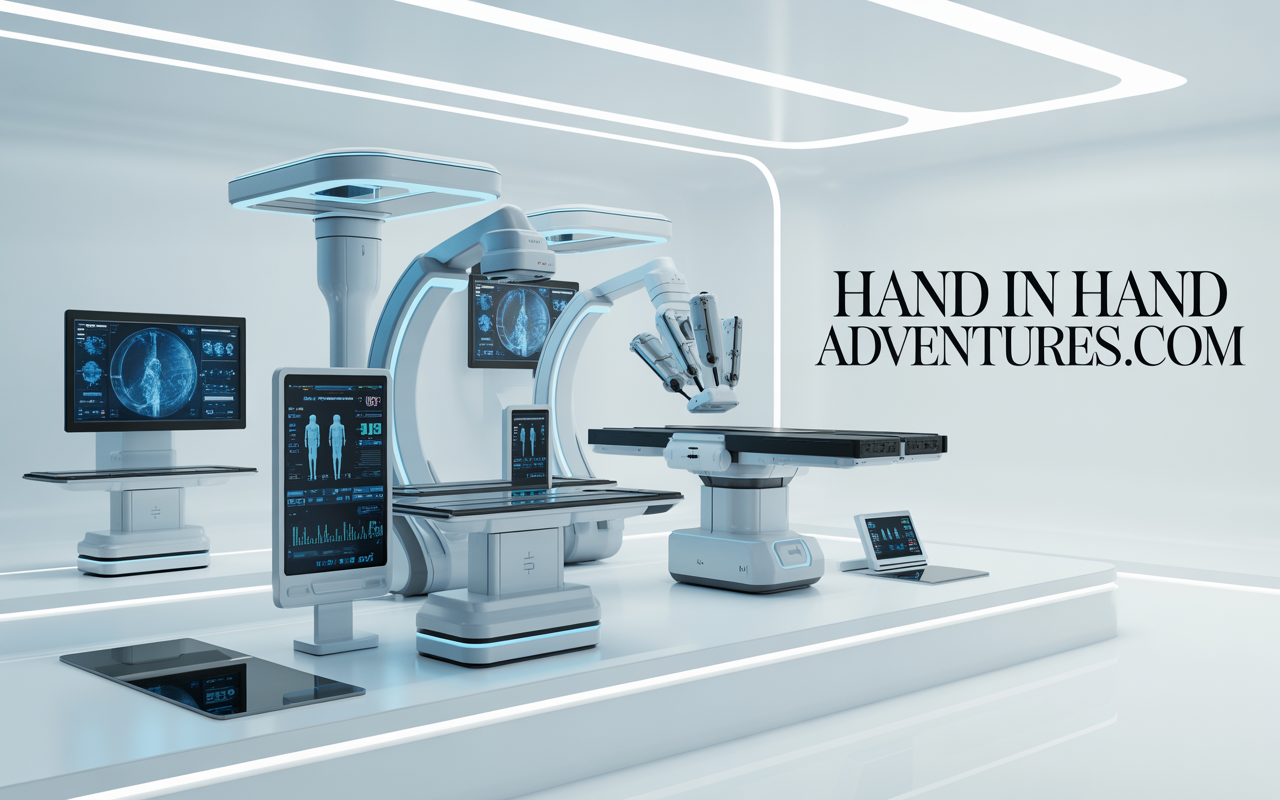The term fonendi has been gaining attention within medical circles, especially as device innovation advances and diagnostic tools evolve. In this article, the brand, products, uses, challenges, and future prospects tied to fonendi will be explored in depth. Through careful analysis and real-world examples, readers will understand how fonendi helps transform how clinicians listen, diagnose, and monitor patients.
Fonendi: Origin and Company Background
The brand fonendi was established with the aim of creating high-quality auscultation and diagnostic instruments. Initially, the product line included digital and acoustic stethoscopes, but over time, expansion into telemedicine and patient monitoring accessories occurred. The founders envisioned a tool that merges traditional stethoscope design with modern electronics. Over years, the company earned recognition by securing certifications and distributing globally.
Product Range and Key Innovations
Under the fonendi umbrella, several products exist. For example, digital stethoscopes with Bluetooth connectivity allow audio signals to be streamed to mobile apps. Moreover, noise cancellation circuits improve clarity in busy clinical settings. Some models integrate ECG or pulse oximetry, thus offering multifunctional diagnosis. Besides, portable monitoring kits and accessory modules for data export are offered. The synergy between hardware and software is central to fonendi’s appeal.
Technical Specifications and Performance
Fonendi engineers build devices with sensitive acoustic sensors, often using MEMS microphones or piezoelectric transducers that capture frequencies across the cardiac and pulmonary ranges. The signal processing pipeline applies analog filtering, amplification, digitization, and optional noise suppression. Compared with traditional stethoscopes, these designs typically enhance the signal-to-noise ratio. Developers also optimize battery life to ensure reliable, extended clinical use. Firmware updates provide performance improvements over time.
Clinical Applications and Use Cases
In hospital settings, fonendi stethoscopes are used for heart, lung, and bowel sounds. They are particularly helpful in noisy wards or emergency rooms where ambient noise interferes. In telemedicine, fonendi devices enable remote auscultation, so a specialist at another location listens live. In education, students may record and share sounds for study or peer review. Also, in community clinics, portable fonendi kits support mobile health campaigns. Across these contexts, fonendi adapts to diverse clinical demands.
User Experience and Feedback
Clinicians who have adopted fonendi often praise clarity, ease of use, and data export features. Some mention a learning curve in app integration, but once mastered, the workflow becomes smoother. Users note that carrying a fonendi unit adds slight weight compared to a lightweight acoustic stethoscope, yet the diagnostic gain is viewed as worth that tradeoff. Some criticisms include occasional Bluetooth dropouts and limited support in remote areas. Nonetheless, over time firmware updates and training have mitigated many issues.
Regulatory Compliance and Safety
Medical devices like those from fonendi must comply with regulatory standards such as CE marking in Europe or FDA clearance in the U.S. The company ensures adherence to electromagnetic compatibility, biocompatibility, and electrical safety norms. Clinical validation studies have been conducted to demonstrate accuracy against gold-standard devices. Moreover, quality control systems and risk management processes are in place. These measures reassure buyers and institutional purchasers that fonendi meets professional standards.
Market Trends and Competitive Landscape
The medical device market is crowded with traditional stethoscope makers and digital newcomers. Fonendi competes against brands offering digital stethoscopes, handheld monitors, and smartphone-based auscultation apps. Currently, the global digital stethoscope market is growing, driven by telehealth trends and rising demand for remote diagnostics. Fonendi differentiates via reliability, local support, and integration capacity. Partnerships with hospitals and training institutions further strengthen its position.
Challenges and Limitations
Certain limitations affect fonendi’s broader adoption. Cost is higher than basic acoustic stethoscopes, preventing uptake in low-resource settings. Connectivity requires stable wireless infrastructure, which may be absent in rural regions. Battery dependence imposes maintenance overhead. Additionally, in extremely noisy environments, even advanced noise cancellation might be strained. Training users and technical support must scale as product reach expands. Strategic planning is required to overcome these barriers.
Integration with Health IT Systems
A key strength of fonendi lies in its ability to export auscultation and vital sign data into electronic health records (EHR) or PACS. Standard communication protocols like HL7 or FHIR are supported. In that way, clinicians can tag recordings to patient records, annotate findings, and retrieve historical data. Integration ensures continuity and supports longitudinal monitoring. Furthermore, cloud back-end services permit secure storage and analytics.
Future Directions and Roadmap
Looking ahead, fonendi is expected to expand into AI-assisted diagnosis, enabling automated murmur detection or lung pathology alerts. Collaboration with research institutions may lead to validated algorithms that support clinical decision making. Miniaturization and cost reduction may open consumer health markets. Moreover, regional manufacturing and localized support networks could increase accessibility. Continued software updates and ecosystem growth will shape the brand’s trajectory.
Case Studies and Real-World Impact
In a rural clinic pilot, fonendi devices enabled specialist consultation from a tertiary hospital, reducing patient travel and diagnosis delay. In a cardiology department, junior doctors used fonendi-recorded sounds to compare with senior cardiologists’ readings, improving learning outcomes. At a mobile health camp, teams carried fonendi kits to screen cardiac anomalies in underserved populations. These case studies illustrate how the device moves from novelty toward practical tool.
Economic Considerations and ROI
From a hospital’s viewpoint, investing in fonendi devices must be justified by improved outcomes or efficiencies. In some settings, early detection of cardiac issues reduced downstream costs. Time saved by fewer repeat examinations and better teleconsultation usage contribute to return on investment. Maintenance costs, software licensing, and staff training should be accounted for. The balance between upfront cost and long-term benefit often determines purchase decisions.
Training, Support, and Community
Effective adoption of fonendi requires training programs to familiarize clinicians with device features, app interfaces, and sound interpretation. Online modules, peer workshops, and video tutorials are provided. Support channels handle firmware issues, hardware troubleshooting, and app connectivity. A user community shares sound libraries, tips, and use cases. This peer network amplifies the product’s reach and usability.
Ethical and Privacy Aspects
When auscultation and patient audio data are captured, privacy must be ensured. Fonendi protocols involve anonymization, encryption, and user consent workflows. Ethical considerations include the use of AI for diagnosis — transparency and validation are essential. Patients must be informed about remote recording and data use. Policies around data retention, access control, and secured transfer are strictly upheld.
Comparisons with Alternative Technologies
When compared with smartphone-only auscultation apps, fonendi generally provides richer sound quality, dedicated sensors, and clinical reliability. Against handheld multiparameter monitors, fonendi is more specialized but extends diagnostic depth. Traditional acoustic stethoscopes remain lighter and free from power constraints, but they lack digital features. Thus, fonendi occupies an intermediate niche, combining tradition and innovation.
User Adoption Strategies
To increase adoption, fonendi may offer leasing models or subsidized pricing for educational institutions. Pilot programs in hospitals can demonstrate capabilities. Collaborations with medical schools bring early familiarity among trainees. Marketing that emphasizes telehealth readiness and diagnostic precision resonates well. Local distributors and responsive support create trust in new markets.
Sustainability and Manufacturing Practices
Sustainability in electronics manufacturing is increasingly scrutinized. Fonendi has committed to using recyclable materials, minimizing harmful substances, and reducing e-waste. Battery lifecycle management, modular parts, and repairability are prioritized. Supply chain audits and eco-friendly packaging are employed. These steps align the brand with global sustainability trends.
Regenerative Feedback and Audio Libraries
A compelling aspect of fonendi is building shared audio libraries of cardiac and pulmonary sounds, with annotated cases. These libraries support training, research, and algorithm development. Users may contribute anonymized recordings for peer review. Over time, a global repository emerges, enriching clinical diagnostics and fostering collaborative learning.
Customization and Localization
In different regions, developers tailor fonendi devices to local clinical needs — for example, they add modules for tropical disease lung patterns or customize software languages. Regional firmware versions and local support improve adoption. Calibration for environmental conditions like humidity or altitude ensures reliable performance globally.
Risk Management and Device Reliability
Reliability is critical in medical instrumentation. Fonendi devices undergo stress testing, calibration checks, and failover safety modes. Risk assessment processes anticipate sensor failure, data corruption, or power interruption. Engineers integrated error logging, self-diagnostics, and redundant safeguards into the system. Their robust design minimizes device downtime effectively.
Longitudinal Monitoring and Chronic Disease Management
Over time, fonendi can help clinicians monitor chronic cardiac or pulmonary patients at home. Patients record periodic sounds and send them directly to their doctors for trend analysis. When the system detects abnormal changes, it immediately triggers alerts, allowing doctors to intervene early. This model supports preventive care and reduces hospital visits.
Global Health and Low-Resource Settings
In low-resource settings, fonendi faces hurdles like cost and connectivity. Yet, simplified versions may be deployed alongside basic mobile platforms. Training community health workers to use fonendi for early detection of murmur or lung disease could yield large public health benefits. Partnerships with NGOs and governments may subsidize deployment.
Conclusion
The story of fonendi is one of blending tradition with innovation. Fonendi has grown from its roots in auscultation and now actively reshapes diagnostic workflows through its expansion into digital health. While challenges related to cost, infrastructure, and training exist, the advantages of clarity, data integration, and remote capability offer compelling reasons for adoption. As the company continues to evolve its product line, integrate AI, and expand its support networks, fonendi may become a standard tool in clinics, hospitals, and even homes worldwide.

